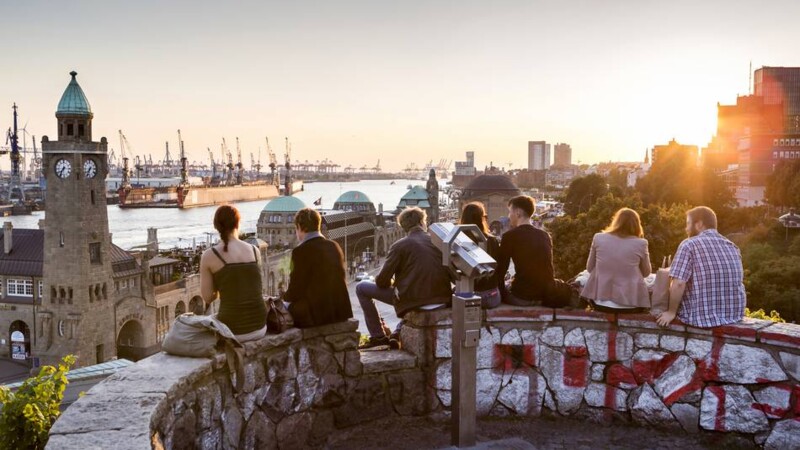Ongoing digitalization is revolutionizing the outer-house market. The distinctions between retail and catering and between online and offline are unclear. Classic industrial structures are losing importance. Caterers are getting more competition from the technological sectors: reservations, order and payment systems, new foods (cheese, meat or egg substitutes made of plants) or on-demand delivery services from local farms count among the innovations by non-sectoral companies. The sales channel is unimportant for tomorrow’s customer. What counts is having the right offer available at the right time. Thus caterers will have be present in all media.
The Internorga (11. – 20.3.) has offered an overview of developments and challenges posed by the catering market. The 90th anniversary of this leading fair for the hotel trade, gastronomy and catering sector has forecast the future and commissioned the Gottlieb Duftweiler Institute Zurich (GDI) with a study of arguments. Headed by Dr. David Bosshart, CEO, seven arguments on catering trends have been established that reflect the most important developments in the sector.
Argument 1: New competitive conditions
Argument 2: We are becoming increasingly comfortable
Our everyday lives are marked by mobility, flexibility and speed. Consumers are placing more demands on quality and more emphasis on convenience food. The future will be marked by the development towards comfort eating. Two challenges have to be tackled: consumers want clarity about origin, production conditions, nutrients and additives in convenience food. Yet, convenience food does not meet the demand for fresh, natural, local and biological food products. The challenge is for catering to find new concepts to fill the gap between convenience food and sustainable experiences and to assert its position over retail, take-away or vending machines.
Argument 3: Homing instead of cocooning
Eating at home is regaining importance against the backdrop of increasing mobility. Consumers are using new delivery services and technology. The more abundant, simpler and disposable the possibilities of ordering become, the more recourse to them. Delivery food services are fuelling this development by supplying recipes, ingredients or even cooks who prepare the food at customers’ homes. Traditional food formats will have to reposition themselves in future to make dining in restaurants tastier and more attractive.
Argument 4: Social food beats taste
Street food festivals instead of concerts mean food is increasingly becoming a lifestyle, a means of identification, status symbol and a form of expression. The pleasant atmosphere in restaurants is becoming more important and offers catering more opportunities of fighting homing trends. Restaurants can become inspiring places and impart knowledge, as well as places of recovery for body and soul, for socializing and lifestyle, adventurous places, curiosity and social nexuses.
Argument 5: Food helps form identities
Migration is fuelling demand for culture-specific offers. Food from Persia, Afghanistan and African countries like Ghana are influencing the gastronomy of the future. Addressing customers in a culture specific manner is crucial. Global marketing messages are only reaching minorities to a limited extent. This development is offering individualized gastronomy more chances of gaining guests and reflects mainly the growth in family-orientated restaurants. Large chains are also placing more emphasis on cultural-specific offers.
Argument 6: Between high-tech and romantic, biological products
Consumers have two conflicting needs and seek the comfort of high-tech food that goes hand in hand with a vast range of innovative, personally designed and easily obtainable products. Yet, at the same time, consumers crave the romantic world of biological products. Restaurants in the future will blend high-tech with this romanticism: high-tech has a background function as it supports the craving for romanticism, overview, stories, transparency and sustainability. Online and offline offers complement each other. The food of the future is as swift as fast food and of the same high quality as biological products.
Argument 7: Brand ambassadors instead of anonymous labels
The importance of a meal or product will in future lie with guests and consumers rather than in the providers’ advertisements. The faces and histories of food producers gain importance and increasingly function as a label. They thus form a unit with their products and are personal guarantors for quality. Employees, service staff, chef and owner are key to the restaurant of the future. Their personal competence in relation to products, production and processing is a prerequisite for success.
pb
Sources and further information
About Internorga
This leading fair is famous throughout Europe in the hotel trade, gastronomy, institutional catering sectors and among bakeries and confectioners and has been held since 1921. The Association of the German Trade Fair Industry (AUMA) has classified it as the only international traditional fair for the hotel trade and gastronomy. Every year in March, around 1,300 exhibitors from Germany and abroad present their new products, trends and complete solutions for the entire out-of-house market. The exhibitors’ presentations are enhanced by a huge supporting programme, congresses with international speakers, award presentations and innovative side-events. Internorga is usually held in the Hamburg exhibition centre at the heart of the Hanseatic city. Admission is for trade visitors only with corresponding legitimation. Admission: EUR31 (two-day ticket: EUR39.50), technical college students: EUR16. More information about the fair can be found on www.internorga.com.
About GDI
The Gottlieb Duttweiler Institute (GDI) is a research institute in Rüschlikon near Zurich and is the oldest, independent think-tank in Switzerland. Researchers at GDI investigate megatrends and countertrends and develop future scenarios. Their insights are recorded in various publications and discussed at conferences and meetings. The GDI is a practice-oriented, independent institution with a thematic focus on the early detection of trends in retail and consumption. More information can be found on www.gdi.ch
More
Similar articles
